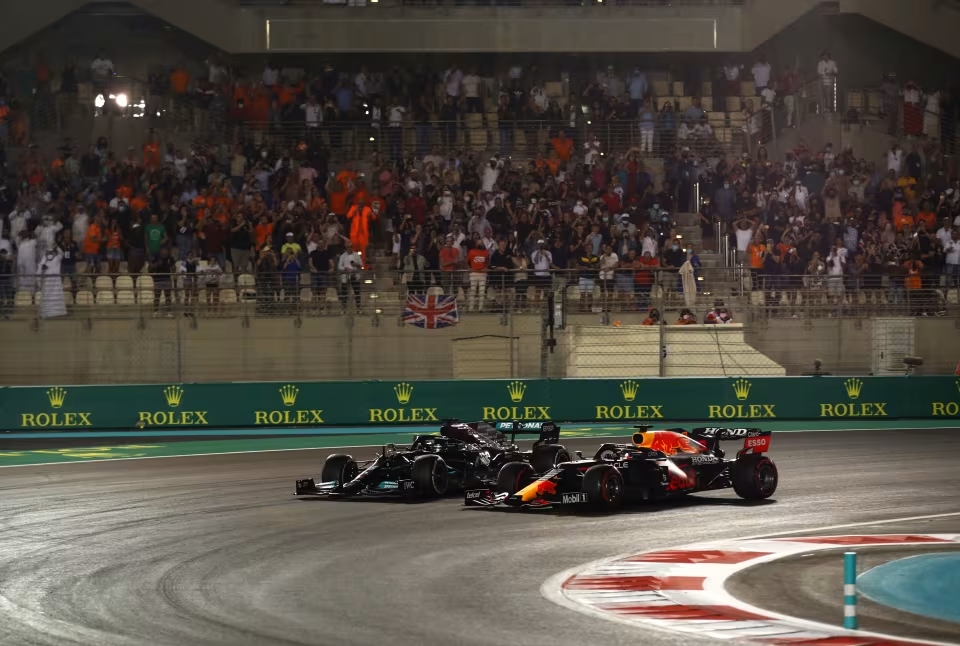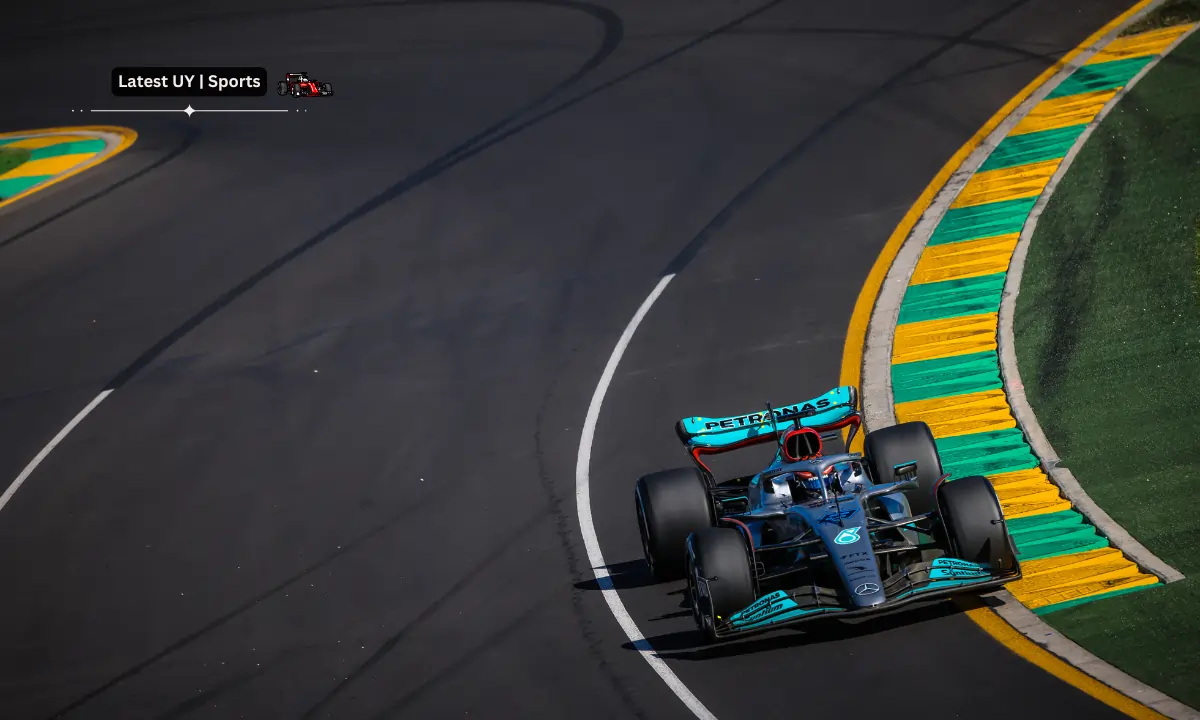
The 2021 Formula 1 season finale was held at the Yas Marina Circuit in Abu Dhabi on 12th December of that year, and nobody knew that it would go down in the history of the sport as one of the most controversial and dramatic races creating history. It featured an intense battle between Lewis Hamilton and Max Verstappen, who came into the race tied on overall points from the whole season, which is a rare occurrence in Formula 1, and whoever wins the race becomes the world champion of Formula One for the season 2021.
This unique scenario created a perfect storm for a dramatic showdown for the championship. At the same time, both of the drivers were vying for their respective legacies. Lewis Hamilton is aiming for a record-breaking eighth world title, and Max Verstappen is gunning for his first championship. The controversy that unfolded in the closing stages of the race left fans divided and raised numerous questions about the application of FIA regulations.
The Battle Leading Up to Abu Dhabi
The 2021 Formula 1 season saw a fierce rivalry that has been developed between Mercedes driver Lewis Hamilton and Red Bull Racing driver Max Verstappen. The two drivers had exchanged victories throughout the season, often battling wheel-to-wheel in some of the most thrilling racing action the sport had seen in years. The season had already been marked by controversies and incidents, which included notably crashes between Hamilton and Verstappen at Silverstone, Monza and Brazil, which raised tensions between the teams and the drivers.
By the time the F1 circus arrived in Abu Dhabi then booth the drivers were tied on 369.5 points after 21 races at 21 different arenas. The stage was set for a “Winner-takes-all” scenario, and the tension was at its peak. Lewis Hamilton had momentum, having won the three previous races, but Verstappen had the advantage of pole position after a stunning qualifying lap.

The Start: Hamilton Takes Control
At the start of the race, Hamilton made a brilliant getaway from second on the grid, overtaking Verstappen into the first corner. It appeared as though Lewis Hamilton had the upper hand, especially after Verstappen tried to reclaim the lead at Turn 6 by making a late-braking move down the inside. Further, Hamilton, in an attempt to avoid a collision, went off the track and rejoined ahead of Verstappen. The stewards reviewed the incident but decided not to take any action, reasoning that Hamilton had not gained a lasting advantage.
This decision angered the Red Bull camp, but Hamilton continued to lead the race comfortably. For most of the race, Hamilton seemed to be in control while Verstappen wasn’t quite pace enough to challenge him, and Mercedes’s strategy looked to be working well. Further, Hamilton had a lead of around 10-12 seconds for much of the race, and it appeared that he was on his way to securing his eighth world championship title.

The Turning Point: Nicholas Latifi’s Crash
The defining moment of the race came on Lap 53, which was just five laps from the end of the race when Nicolas Lafiti of Williams crashed into the barriers at Turn 14. Rather, his crash brought out the safety car, bunching up the field and erasing Hamilton’s substantial lead over Verstappen, and this was the critical moment that would shape the controversy.
Hence, the Red Bull team quickly took advantage of the situation and called Verstappen into the pits for a fresh set of soft tyres that were quicker, while Mercedes, with Hamilton on their side already past the pit entry, opted to keep him out on his ageing hard tires. This set the stage for a potentially thrilling restart but with the race winding down, there was uncertainty about whether there would be enough laps left for any racing to occur or not.
The FIA’s Decisions and Controversy
The controversy arose during the safety car period due to the FIA’s handling of lapped cars. Normally, under safety car conditions, all lapped cars are allowed to un-lap themselves before the race resumes, allowing the leaders to race each other without interference. However, in this instance, race director Michael Masi made an unprecedented decision.
Initially, Masi said that no lapped cars would be allowed to overtake, but he then reversed this decision, permitting only the five cars between Lewis Hamilton and Max Verstappen to un-lap themselves while the rest of the lapped cars were left in position. This meant that Verstappen, with his fresh tyres, was now directly behind Hamilton for the restart while the other lapped cars remained between Verstappen and the rest of the field.
Moreover, the safety car was called in on the same lap that the lapped cars were allowed to overtake, contrary to the usual procedure, which stipulates that the safety car should come in a lap after the lapped cars have been allowed to pass. This left just one lap of racing, giving Verstappen a clear shot at Lewis Hamilton with a significant tyre advantage.
The Final Lap: Verstappen vs. Hamilton
When the race resumed on Lap 58, Verstappen wasted no time in making his move with his fresher and faster tyres. Verstappen overtook Lewis Hamilton at Turn 5, and Lewis Hamilton fought back and came close to reclaiming the lead on the long back straight, but Verstappen defended his position aggressively, which was not good. Hamilton simply did not have the grip to challenge Verstappen further and had to settle for second place as the other one crossed the line to claim his first Formula 1 World Championship.
Immediate Reactions and Fallout
The aftermath of the race was immediate and explosive as Mercedes lodged two protests with the FIA, arguing that the rules regarding the safety car and the un-lapping of cars had not been correctly followed. They specifically pointed out that only some lapped cars were allowed to overtook and that the safety car had been brought in prematurely. The protests were dismissed by the stewards, who ruled that Masi had the authority to control the use of the safety car as he saw fit. Mercedes considered appealing the decision to the Court of Arbitration of Sport (CAS) but eventually chose not to with a statement that suggested they were putting their faith in future reforms to the sport’s governance.
The controversy sparked a heated debate about the role of the race director and the consistency of FIA regulations. Many fans and pundits felt that Lewis Hamilton had been unfairly denied a record-breaking eighth title, while others argued that Verstappen had been the more deserving champion over the course of the season. This was all a mistake of that single decision taken by the race director or was it a move to stop Lewis Hamilton from achieving what was impossible?
Analysis: Key Issues and Lessons
Several key issues arose from the controversy, which has been widely debated within the motorsport community:
The Role of the Race Director: Michael Masi’s decision came under intense scrutiny particularly his interpretation of the rules regarding lapped cars and the safety car. Some argued that he was under immense pressure to ensure a “Racing Finish” rather than allowing the championship to end behind the safety car. However, critics contended that his actions compromised the integrity of the regulations.
Consistency of FIA Regulations: The inconsistency in the application of rules was a central theme. Throughout the 2021 season, there had been several incidents where the FIA’s decision appeared inconsistent, and this race was seen as a culmination of that trend. The confusion over the un-lapping procedure highlighted the need for clearer and more consistent application of the rules.
Impact on Formula 1’s Reputation: The controversy left a sour taste for many fans, especially Lewis Hamilton and his supporters, who felt that the result had been manipulated to produce a more dramatic finish and also to attain a new champion. The handling of the race raised questions about whether entertainment was being prioritised over fairness in Formula 1.
Future Reforms: The FIA announced that they would review the procedures related to safety cars and the role of the race director, leading to speculation that changes would be made to prevent a repeat of such controversies. Indeed, in early 2022, the FIA removed Michale Masi from his role as race director and implemented a new system that included two race directors and a virtual race control room to assist in decision-making.
FAQ
If Lewis Hamilton would have won, how many titles would he have?
Eight
Who was the race director of the race in Abu Dhabi 2021?
Michael Masi
Who was the competition in that final race of Formula 1 season 2021 between?
Lewis Hamilton and Max Verstappen
Who won the race in Abu Dhabi 2021?
Max Verstappen
How many titles does Lewis Hamilton have?
Seven
What was the name of the circuit of Abu Dhabi?
Yas Marina Circuit


